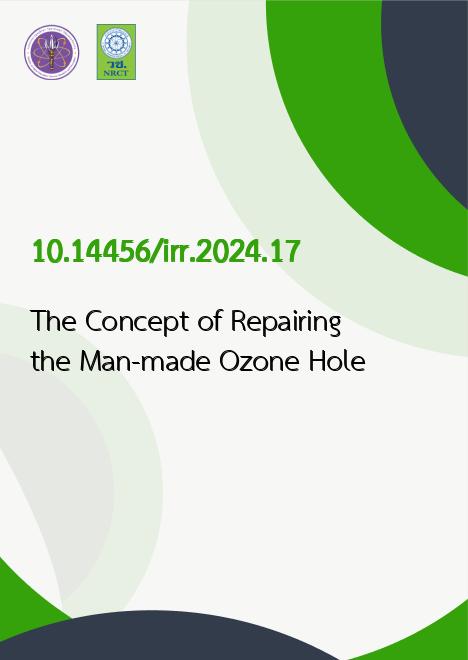
|
The Concept of Repairing the Man-made Ozone Hole |
|---|---|
| รหัสดีโอไอ | |
| Creator | Wuttirong Kongwut |
| Title | The Concept of Repairing the Man-made Ozone Hole |
| Contributor | Phatsaran Laohhapaibon, Ornnicha Kongwut |
| Publisher | Phetchaburi Rajabhat University |
| Publication Year | 2567 |
| Journal Title | Interdisciplinary Research Review (IRR) |
| Journal Vol. | 19 |
| Journal No. | 4 |
| Page no. | 52-60 |
| Keyword | Ozone, Hydrogen, Global warming |
| URL Website | https://ph02.tci-thaijo.org/index.php/jtir |
| Website title | Interdisciplinary Research Review (IRR) |
| ISSN | 2697-536X |
| Abstract | This study explores an innovative concept for repairing the man-made ozone hole using hydrogen gas, addressing one of the most critical environmental challenges of our time. We investigate the feasibility, potential impacts, and broader implications of this intervention. The proposed method involves injecting pure hydrogen gas into the stratosphere to neutralize ozone-depleting substances, particularly chlorine monoxide. Our analysis encompasses the chemical mechanisms, delivery methods, and optimal conditions for this process. We compare this artificial approach with natural ozone repair processes, evaluating their respective advantages, disadvantages, and expected outcomes. The study reveals that while hydrogen injection offers potential for rapid, targeted ozone restoration, it also presents significant technological challenges and risks of unintended consequences. These include potential alterations in stratospheric water vapor content and complex atmospheric feedback loops. The research extends beyond technical feasibility to consider crucial ethical, geopolitical, and long-term atmospheric implications. We discuss the ethical considerations of large-scale atmospheric manipulation, potential geopolitical tensions arising from such capabilities, and the impact on global climate change mitigation efforts. Our findings suggest that while hydrogen-based ozone repair shows promise, it requires extensive further research, international cooperation, and careful consideration of its wide-ranging effects. The study concludes by emphasizing the need for a holistic, interdisciplinary approach to ozone layer restoration, balancing technological innovation with ecological stewardship and global environmental governance. |